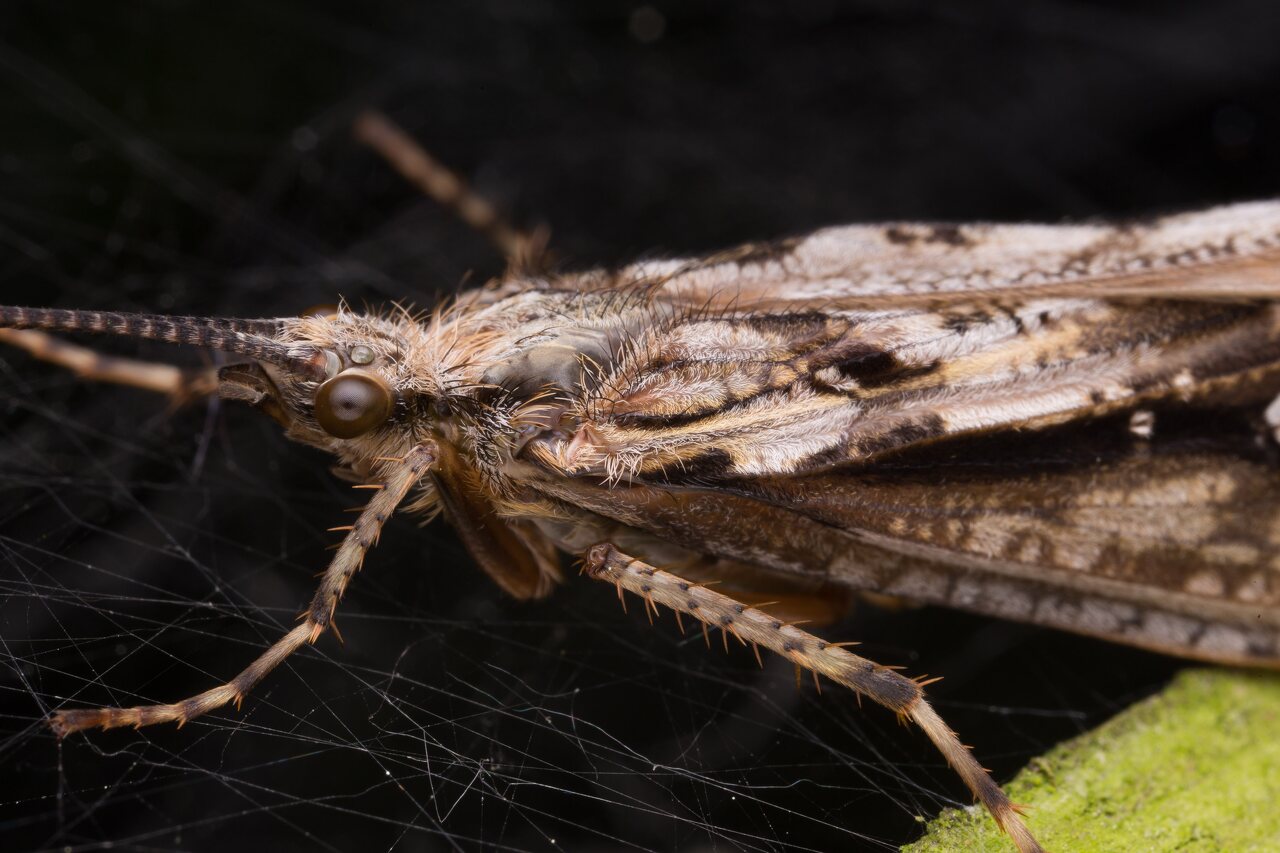
Phryganea bipunctata female · apsiuva ♀
- järrisirvikäs
- chruścik dwuplamy
- trichopteraireland.wordpress.com/2016/02/07/species-profile-phryganea-bipunctata/
- naturespot.org.uk/species/phryganea-bipunctata
A large caddisfly with a forewing length of 18 to 26 mm. In the female the two sections of the dark central wing bar usually well separated by a pale area, although this is not a reliable way of separating the species from Phryganea grandis so identification based on field photographs may be impossible.
Larvae can be found in ponds, lakes, canals and slow-moving rivers. Its substratum preference includes woody debris, coarse and fine particulate organic matter, plants and mud. Phryganea bipunctata has a univoltine reproductive cycle (one generation per year) in temperate regions and lives less than one year. Its feeding ecology is mainly predatory, with some shredding of fallen leaves and plant material, gathering of fine particulate organic matter, and grazing.
‥
0 comments
Add a comment